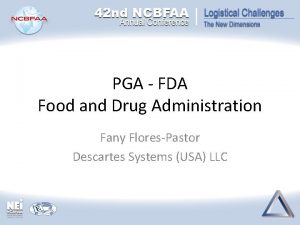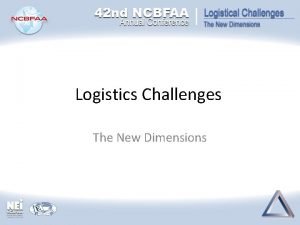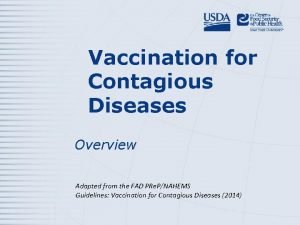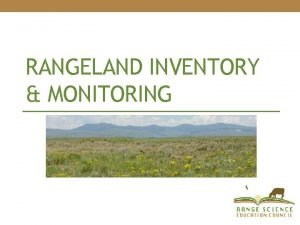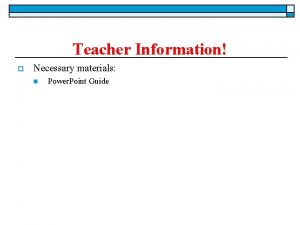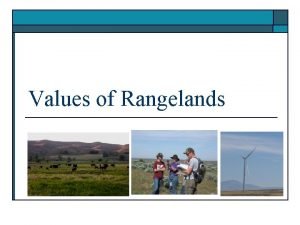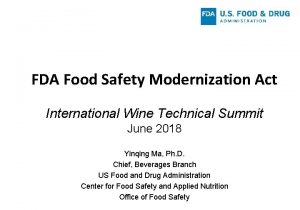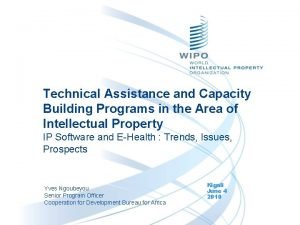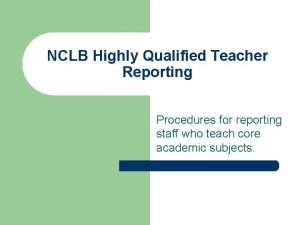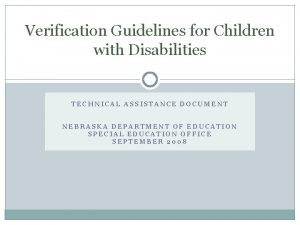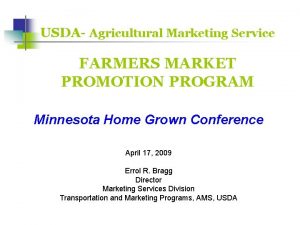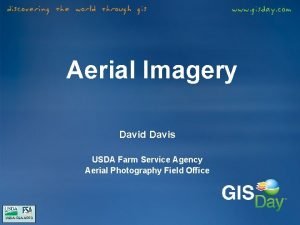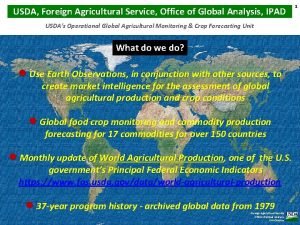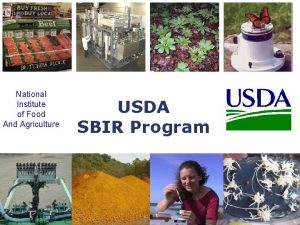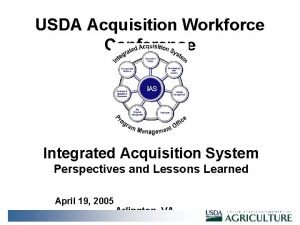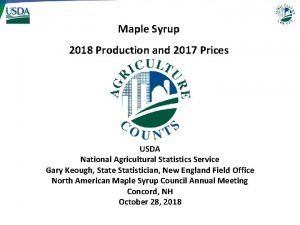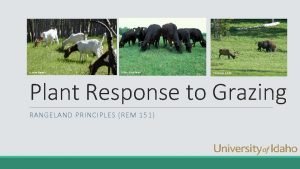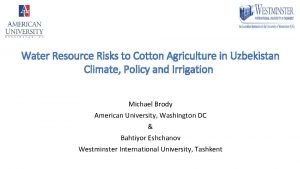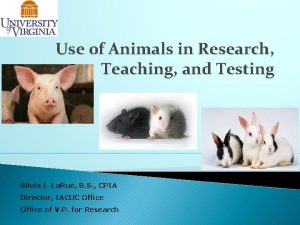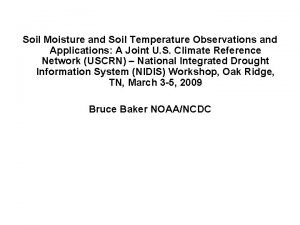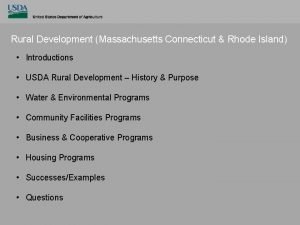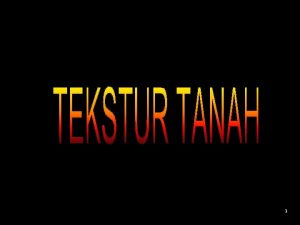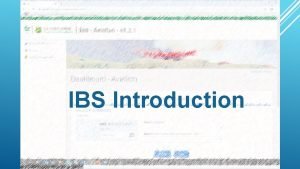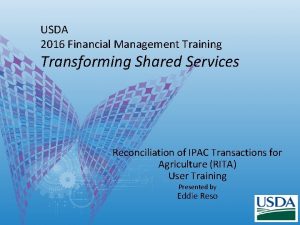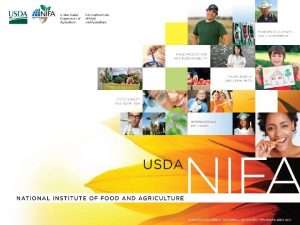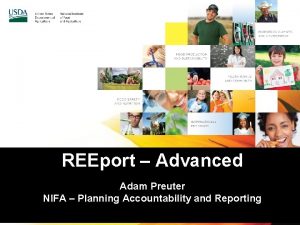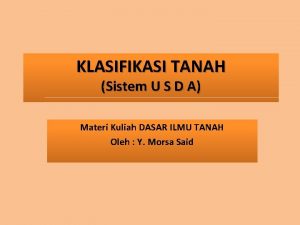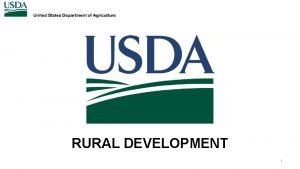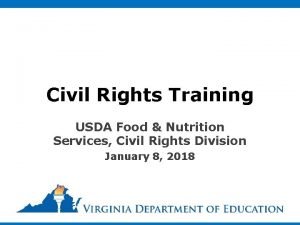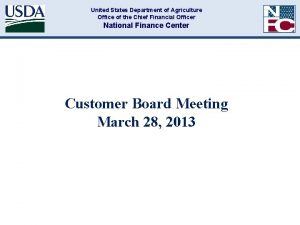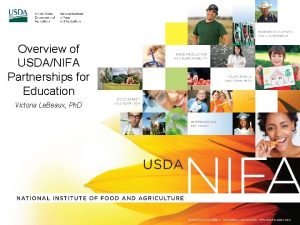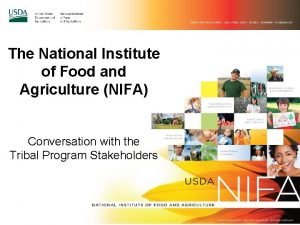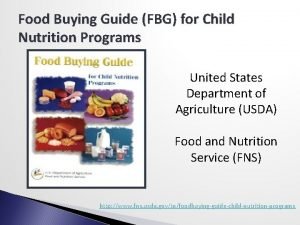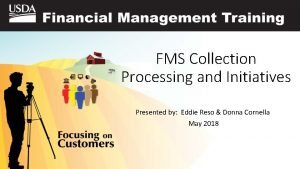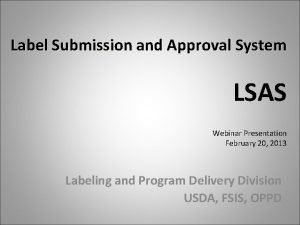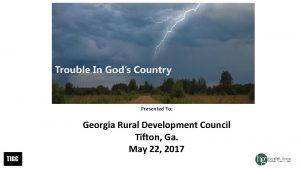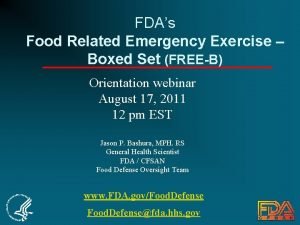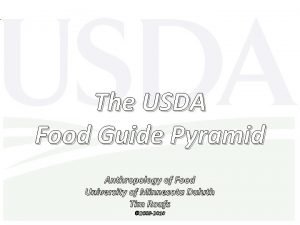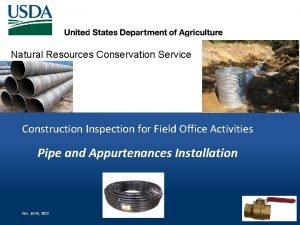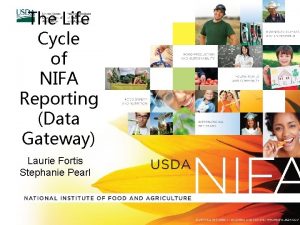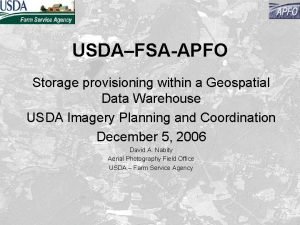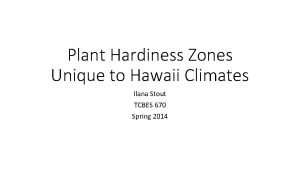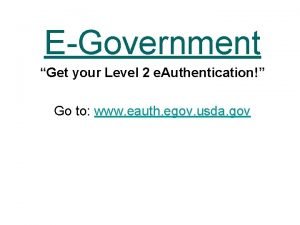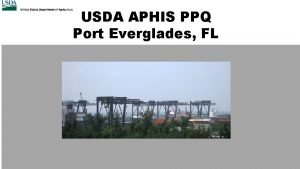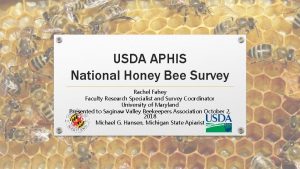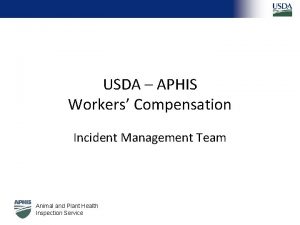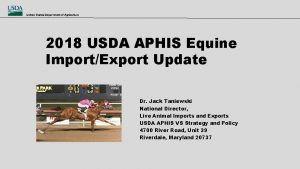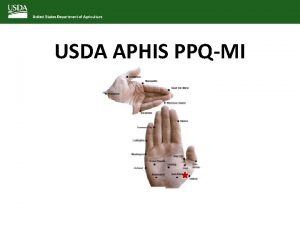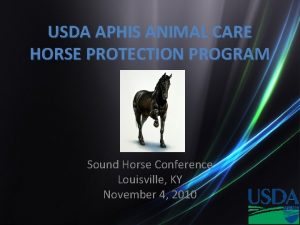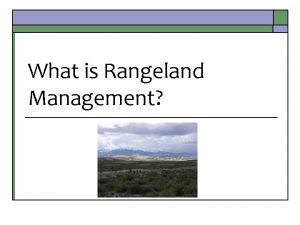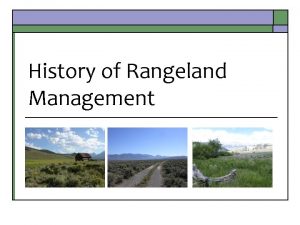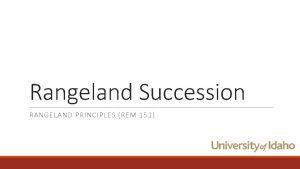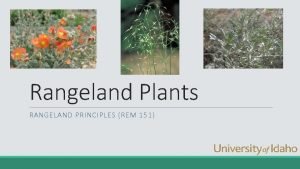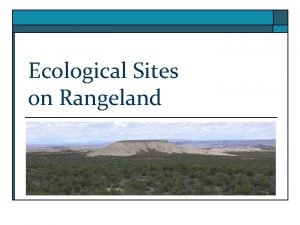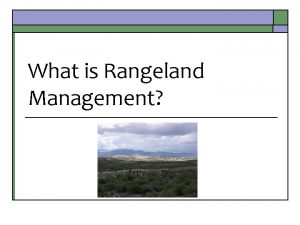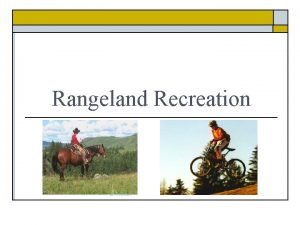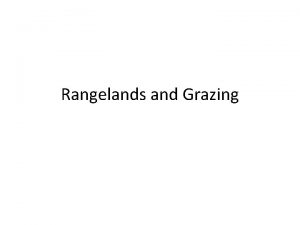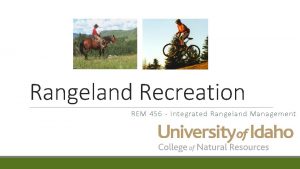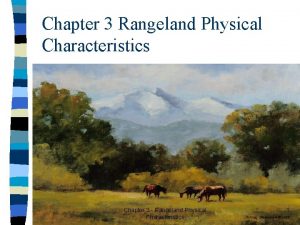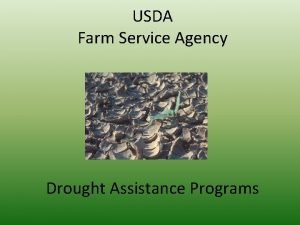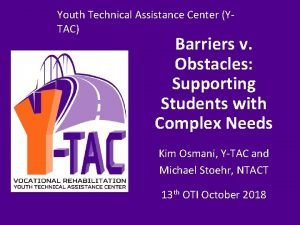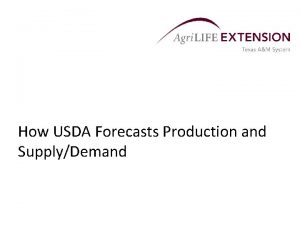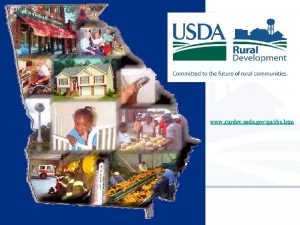l l USDA APHIS Survey Rangeland Technical Assistance


























































- Slides: 58


l l USDA, APHIS Survey Rangeland!!! Technical Assistance l Suppression Programs Border Protection treatments u Rangeland Protection treatments u • Cost Share • RAATs

Grasshopper Species l While there are more than 400 known species of grasshoppers in the Western United States, only about two dozen are considered pest species capable of producing economic damage.

Economic Montana Rangeland Species Ageneotettix deorum (Scudder) Aulocara elliotti (Thomas) Camnula pellucida (Scudder) Melanoplus bivittatus (Say) Melanoplus dawsoni (Scudder) Melanoplus femurrubrum (De. Geer) Melanoplus infantilis Scudder Melanoplus sanguinipes (Fabricius) Opeia obscura (Thomas) Phlibostroma quadrimaculatum Phoetaliotes nebrascensis (Thomas) Trachyrhachys kiowa (Thomas) Anabrus simplex Haldeman Whitewhiskered grasshopper Bigheaded grasshopper Clearwinged grasshopper Twostriped grasshopper Dawson grasshopper Redlegged grasshopper Little spurthroated Migratory grasshopper Obscure grasshopper Fourspotted grasshopper Largeheaded grasshopper Kiowa grasshopper Mormon cricket

5 th Instar 16 -23 mm Adult Migratory Grasshopper Male; 20 -26 mm Female; 20 -29 mm

Conducting Rangeland Surveys l Visualize a square foot ahead of you l Walk toward imaginary Ft 2. l Count # GHs that jump out. l Repeat 18 times l Divide total by 2 l Gives total GH/yd 2 [there are 9 sq ft in 1 sq yd]

Apply the Magic of RAATs

RAATS Concept l Reduced Area & Agent Treatment Acreage u Insecticide u l Hoppers killed directly in treated areas l Hoppers move into treated strips u 1 -3 miles/day l Less disruption of natural enemies


RAATS - Options 1. Sevin XLR 8 oz/A + 8 oz water (p. H 7) [standard 8 – 16 oz] u 100 ft treated alternating 100 ft untreated 2. Dimilin 2 L u 0. 75 oz/A + 8 oz water + 4 oz oil [standard 1 oz] u 100 ft treated alternating 100 ft untreated 3. Dimilin 2 L u 1 oz/A + 8 oz canola oil [standard 1 oz] u 100 ft treated alternating 200 ft untreated 4. Malathion u 4 oz /A [standard 8 oz] u 100 ft treated alternating 25 ft untreated u

Characteristics of three RAATS chemical treatments Malathion Sevin Dimilin OP Carbamate IGR Residual 1 day 14 28 Knockdown Rapid 48 hrs Life Stage All Immatures Pollinators Bad v. Bad indirect Cost Low Mod


ATV - RAATS l Chemicals: u u u Dimilin 2 L (1 oz/A) Sevin XLR (16 oz/A) Malathion (8 oz/A) l Recommendations u u u Minimum of 20% acreage is sprayed Percent Coverage = hoppers density/ sq yd Ex: Average 30 hoppers/sq yd then 30% coverage • If swath width is 15 ft. 15/0. 3 = 50 ft: Treat 1 swath every 50 ft u Example: 40 grasshoppers/sq yd you need 40% coverage. • If 15 ft swath then 15 ft/40% means spraying a swath every 37. 5 feet l Results u u Reduce insecticide by 60 -80% Focus treatment on more productive areas

1 oz. Dimilin 2 L ATV-RAATs 20% Coverage Results Model 140 nozzle (Avg. of 5 gal. of water carrier/acre) on 20 acre replicated plots. Bremer Ranch, Goshen Co. WY, 20 -21 June 2001 Non-aqueous carrier oz/ac time 8 canola oil -1 d 14. 6 - +3 wk 2. 8 86 8 Amigo® oil 8 Crop oil No oil -1 d GH/sq. % mortality meter corrected 16. 50 - +3 wk 2. 4 88 -1 d 11. 8 - +3 wk 1. 75 90 -1 d 16. 0 - +3 wk 3. 9 84

16 oz. Carbaryl ATV-RAATs 20% Coverage Results Model 140 nozzle (5 gal. of water carrier/acre) on 20 acre replicated plots. Bremer Ranch, Goshen Co. WY, 21 June 2001 Non-aqueous carrier oz/ac time 9 canola oil -1 d 16. 8 - +3 wk 6. 5 73 -1 d 13. 4 - +3 wk 3. 9 81 No oil GH/sq. % meter mortality corrected

OK, What does it cost? Dimilin 2 L @ $210/Gal - 20% coverage at 1 oz rate $0. 54 / acre protected Malathion 57 EC @ $27/Gal - 20% coverage at 32 oz rate $0. 68 / acre protected Carbaryl @ $27/Gal - 50% coverage at 32 oz rate $0. 84 / acre protected Minimum cost for chemicals at the minimum recommended coverage rate.

Exceptions l Treating too late – large instars l Ground temp > air temp u Especially for malathion l Grasshopper densities are extreme l Forage cover is tall & dense l Terrain is rough

Bran formulations

Species susceptible to bran baits (>55% control) (30 to 55% control ) (<30% control) Ageneotettix deorum Anabrus simplex Aulocara elliotti Camnula pellucida Hadrotettix trifasciatus *Melanoplus bivittatus Melanoplus confuses Melanoplus dawsoni Melanoplus foedus *Melanoplus infantilis *Melanoplus occidentalis *Melanoplus packardii Melanoplus sanguinipes Spharagemon equale Stenobothrus brunneus *Mermiria bivittata *Aulocara femoratum Aeropedellus clavatus Amphitornus coloradus Cordillacris crenulata Cordallacris occipitalis Hesperotettix viridis Metator pardalinus *Phlibostroma quadrimaculatum Trachyrhachys kiowa Eritettix simplex Melanoplus femurrubrum Oedaloenotus enigma Opeia obscura Phoetaliotes nebrascensis Psoloessa delicatula

APHIS Rangeland Treatments l 10, 000 Acres Minimum l Rangeland only u 20% cropland (paid by landowner) l PPQ Cost Share u 100% Federal/Trust land. u 50% State land. u 33% Private land. • 16. 15% indirect charges.

Rangeland Treatments l Letter(s) of Request from all parties. l Cooperative Agreement(s) Signed. l Estimated Funds in Escrow Account. l Planning early l PPQ will contract with aerial applicator (1 -3 weeks) u Must be on pre-approved list u

Border Treatments l Federally-Administered Land Adjacent to Private Agricultural Land. l GH/MCs moving Fed → Private. l Written Request from Federal Land Manger. l PPQ treat ¼ to ½ mile buffer. l Contingent on Availability of Funds.

National Environmental Policy Act (NEPA) l Final Environmental Impact Statement (FEIS) – 2000. l Site Specific Environmental Assessments (EAs) l Finding of No Significant Impact (FONSI)

l Endangered Species Act (ESA) u USFWS: Section 7 Consultations u Mitigation Measures • Buffers • Treatment Alternatives l Environmental Monitoring u Insects u Water u Vegetation u Quality Control

PPQ? vs yourself? Do it l. PPQ contracting. l. Local applicators? l. NEPA/ESA requirements.

Plant Protection and Quarantine




Black Grass Bug

Response of % acid detergent fiber to BGB damage, 2002 y = 25. 34 + 1. 67 r 2 = 0. 77 P = 0. 02 Black Grass Bug Rating (0 to 5)

Response % neutral detergent fiber (NDF) to BGB damage, 2002. y = 46. 14 + 2. 8 x r 2 = 0. 83 P = 0. 01 0 1 2 3 4 5 6

Response of % crude protein (CP) to BGB damage, 2002. y = 25. 62 - 2. 1 x r 2 = 0. 38 P = 0. 04 0 0 1 1 2 2 3 3 4 4 Black Grass Bug Rating (0 to 5) Black. Grass. Bug. Rating(0 (0 toto 5) 5) 5 5 6 6

Observations l Livestock off feed, condition u Palatability u digestibility l Approx 30% yield loss l BGB damage is greater under drought conditions l Little movement / spread

Management l Fall or spring utilization u Eliminates / reduces overwintering egg stage u Grazed or hayed l Insecticide application u If moisture is adequate, recovery is rapid u Costly l Multiple year benefit of management u Slow spread


Bran Spreaders: ATV

Bran Spreaders: Pickup

Match Bran to Spreader

Bran Acceptance Species Sensitive (>55% control) Control is expected to average about 70%. Worst-case and best-case scenarios will be about 55% and 85%, respectively. Ageneotettix deorum Anabrus simplex Aulocara elliotti Camnula pellucida Hadrotettix trifasciatus *Melanoplus bivittatus Melanoplus confuses Melanoplus dawsoni Melanoplus foedus *Melanoplus infantilis *Melanoplus occidentalis *Melanoplus packardii Melanoplus sanguinipes Spharagemon equale Stenobothrus brunneus *Mermiria bivittata

Vulnerable (30 - to 55 -% control ) Control is expected to average about 42%. Worst-case and best-case scenarios will be about 12% and 72%, respectively. *Aulocara femoratum Eritettix simplex Melanoplus femurrubrum Oedaloenotus enigma Opeia obscura Phoetaliotes nebrascensis Psoloessa delicatula

Non-susceptible (<30% control) Control is expected to average about 15%. Worst-case and best-case scenarios will be about 0% and 30%, respectively. Aeropedellus clavatus Amphitornus coloradus Cordillacris crenulata Cordallacris occipitalis Hesperotettix viridis Metator pardalinus *Phlibostroma quadrimaculatum Trachyrhachys kiowa

l Gary D. Adams, State Plant Health Director l (406) 449 -5210 l Gary. D. Adams@aphis. usda. gov l Joe Merenz, Domestic Program Coordinator l (406) 449 -5210 l Richard. J. Merenz@aphis. usda. gov l Glenn I. Harruff l (406) 657 -6282 l Glenn. I. Harruff@aphis. usda. gov

PPQ Mission Safeguard Agriculture & Natural Resources Ensure High Quality, Abundant & Varied Food Supply Strengthen Marketability of U. S. Agriculture Contribute to Preservation of Global Environment

Life cycle

55 common Montana grasshopper species Aeoloplides turnbulli (Thomas) Russianthistle grasshopper Aeropedellus clavatus (Thomas) Clubhorned grasshopper Ageneotettix deorum (Scudder) Whitewhiskered grasshopper Amphitornus coloradus (Thomas) Striped grasshopper Anabrus simplex Haldeman Mormon cricket Arphia conspersa Scudder Specklewinged grasshopper Arphia pseudonietana (Thomas) Redwinged grasshopper Aulocara elliotti (Thomas) Bigheaded grasshopper Aulocara femoratum Scudder Whitecrossed grasshopper Boopedon nubilum (Say) Ebony grasshopper Brachystola magna (Girard) Plains lubber grasshopper Bruneria brunnea (Thomas) Bruner slantfaced grasshopper Camnula pellucida (Scudder) Clearwinged grasshopper Chorthippus curtipennis (Harris) Meadow grasshopper Chortophaga viridifasciata Greenstriped grasshopper Cordillacris crenulata (Bruner) Crenulatewinged grasshopper Cordillacris occipitalis (Thomas) Spottedwinged grasshopper Derotmema haydeni (Thomas) Hayden grasshopper Dissosteira carolina (Linnaeus) Carolina grasshopper Dissosteira longipennis High Plains grasshopper Encoptolophus costalis Dusky grasshopper Eritettix simplex (Scudder) Velvetstriped grasshopper Hadrotettix trifasciatus (Say) Threebanded grasshopper Hesperotettix viridis (Thomas) Snakeweed grasshopper Hypochlora alba (Dodge) Cudweed grasshopper Melanoplus alpinus Scudder Alpine grasshoper Melanoplus angustipennis Narrowwinged sand Melanoplus bivittatus (Say) Twostriped grasshopper Melanoplus borealis (Fieber) Northern grasshopper Melanoplus bowditchi Scudder Sagebrush grasshopper Melanoplus bruneri Scudder Bruner spurthroated grasshopper Melanoplus confusus Scudder Pasture grasshopper Melanoplus dawsoni (Scudder) Dawson grasshopper Melanoplus devastator Scudder Devastating grasshopper Melanoplus differentialis Differential grasshopper Melanoplus femurrubrum Redlegged grasshopper Melanoplus gladstoni Scudder Gladston grasshopper Melanoplus infantilis Scudder Little spurthroated grasshopper Melanoplus keeleri (Thomas) Keeler grasshopper Melanoplus lakinus (Scudder) Lakin grasshopper Melanoplus occidentalis Flabellate grasshopper Melanoplus packardii Scudder Packard grasshopper Melanoplus rugglesi Gurney Nevada sage grasshopper Melanoplus sanguinipes Migratory grasshopper Mermiria bivittata (Serville) Twostriped slantfaced grasshopper Metator pardalinus (Saussure) Bluelegged grasshopper Oedaleonotus enigma Valley grasshopper Opeia obscura (Thomas) Obscure grasshopper Orphulella speciosa (Scudder) Slantfaced pasture grasshopper Phlibostroma quadrimaculatum Fourspotted grasshopper Phoetaliotes nebrascensis Largeheaded grasshopper Psoloessa delicatula (Scudder) Brownspotted grasshopper Spharagemon collare (Scudder) Mottled sand grasshopper Spharagemon equale (Say) Orangelegged grasshopper Trachyrhachys kiowa (Thomas) Kiowa grasshopper Xanthippus corallipes Redshanked grasshopper

Mormon crickets

Domestic Programs Exotic Pest Surveys Biological Control weeds insects Gypsy Moth Japanese Beetle Biotechnology Export Certification Grasshopper Mormon Cricket


May Species Aug. Sept. Oct. late Mid Early late Speckled winged Mid larheaded July Early dawson late kiowa Mid spurthroated Early clearwinged late bigheaded Mid Early whitewhiskered June

Life Stages l Eggs

1 st Instar 4 -6 mm 2 nd Instar 6 -8 mm

3 rd Instar 8 -11 mm (1 cm) 4 th Instar 11 -16 mm

Do I treat rangeland hoppers? l Decision Support Software u CARMA http: //www. sdvc. uwyo. edu/grasshopper/carma. htm u HOPPER l > 15 -20 nymphs per yd 2 or u > 8 -10 adults per yd 2

Control Alternatives for PPQ l No Action l Insecticide Applications at Conventional Rates and Total Area l Reduced Agent Area Treatments (RAATS) Alternative.

Boom Buster nozzles

Application Specifications • ATV speed = 15 mph on flat prairie • One Model 140 nozzle = applies 4. 8 gal. per acre at 40 psi @ 15 mph • Effective Spray Swath (single nozzle) = 16 ft • Tank volume = 24 gallons

Aerial- RAATs- 50% Coverage Avg. daily grasshopper movement approximately 10 ft. RAAT-ioactive Zone No Kill Zone Blanket Kill Zone RAAT-ioactive Zone <5 d> 100 ft
 Aphis aq1
Aphis aq1 Aphis form 7041
Aphis form 7041 Aphis
Aphis Aphis
Aphis Rangeland inventory
Rangeland inventory Rangeland management ppt
Rangeland management ppt Idaho rangeland resource commission
Idaho rangeland resource commission List 5 importance of rangeland
List 5 importance of rangeland Fda technical assistance network
Fda technical assistance network Sample technical assistance given to teachers
Sample technical assistance given to teachers Technical assistance plan for teachers deped sample
Technical assistance plan for teachers deped sample Sample of technical assistance plan for teachers
Sample of technical assistance plan for teachers Nde rule 51 technical assistance document
Nde rule 51 technical assistance document Acls secondary survey
Acls secondary survey Fmpp 2011
Fmpp 2011 Usda farm service agency maps
Usda farm service agency maps Usda linc
Usda linc Usda psd online
Usda psd online Usda sbir
Usda sbir Usda foods available list
Usda foods available list Integrated acquisition system
Integrated acquisition system Usda maple syrup production
Usda maple syrup production Chris kidd usda
Chris kidd usda Eforms usda
Eforms usda Tim k
Tim k Usda uzbekistan cotton yield
Usda uzbekistan cotton yield Uva acuc protocol
Uva acuc protocol Usda crn/scan soil map
Usda crn/scan soil map Usda approved towns in massachusetts
Usda approved towns in massachusetts Segitiga tekstur tanah usda
Segitiga tekstur tanah usda Googla chrome
Googla chrome Usda fms
Usda fms Usda nifa
Usda nifa Usda nifa
Usda nifa Klasifikasi tanah menurut usda
Klasifikasi tanah menurut usda Usda morovis
Usda morovis Usda civil rights training
Usda civil rights training Paycheck8 usda
Paycheck8 usda Usda office of the chief financial officer
Usda office of the chief financial officer Usda nifa
Usda nifa Ray ali usda
Ray ali usda Ag learn
Ag learn Food buying calculator
Food buying calculator Usda form 3555-21
Usda form 3555-21 Usda food buying guide calculator
Usda food buying guide calculator Zachary omohundro
Zachary omohundro Usda fms
Usda fms Lsas fsis
Lsas fsis Usda rural development tifton ga
Usda rural development tifton ga Usda food defense self assessment checklist
Usda food defense self assessment checklist Usda food pyramid 1970
Usda food pyramid 1970 Usda approved milk substitutes
Usda approved milk substitutes Us food pyramid
Us food pyramid Usda
Usda Usda nifa
Usda nifa Usda geospatial data warehouse
Usda geospatial data warehouse Usda food and nutrition service
Usda food and nutrition service Growing zones hawaii
Growing zones hawaii Usda e authentication
Usda e authentication
